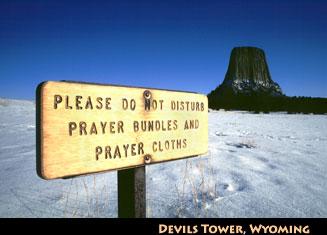The butterfly is an archetypal symbol of transformation,
transmutation, and magic in world mythology and religion. Virtually all
cultures have marveled at the magical process that transforms an ungraceful caterpillar
into a magnificent fluttering butterfly. According to Hindu mythology, Brahma
became filled with deep calm while observing a caterpillar’s transformation and
was convinced to achieve perfection through rebirth. In China
the butterfly was a symbol of conjugal bliss and joy. In the Hopi tradition
unmarried girls of the Butterfly Clan wore their hair in the shape of butterfly
wings. In many traditions, this most exquisite yet fragile creature was a
symbol of the soul. Many cultures around the world believe that butterflies are
the spirits of the deceased communing again with the earth.
I love to commune with the fluttering butterflies I
encounter in my earth walk. They are dancing spirits made of color and joy.
Many butterfly encounters have been powerful spiritual experiences in my life,
like the monarch butterfly that landed on my nose the day after a loved one
passed on. When I encounter one of these remarkable beings, I stop and observe
them carefully. I have learned to trust these endearing spirit guides.
Butterflies have brought me messages from my ancestors and guided me to specific places of power in the web of life on
many occasions.
Sacred Power Places
Earth, human, and solar processes are interwoven through a
vibrational resonant network around the planet. At the intersection points of
the planet’s energy web exist holy places, power spots, or acupuncture points.
According to the Hopi, the world would fall apart without these nodes of
concentrated vitality. These sacred places are like nerve centers that
distribute vital energy throughout the surrounding natural systems. When a
human being goes to a power place, the attention of the Earth Mother is drawn
to that area, and energy begins to flow to that spot because our bodies, like
hers, are electromagnetic. Like acupuncture needles, humans are capable of
maintaining the harmonious flow of the planetary energy meridians by making an
Earth connection at power places.
There are special energy fields at power places that
facilitate healing and transformation. Natural ionization occurs at power sites
and ionized air is known to affect hormone levels, brain function, and
consciousness. Air ions are charged molecules of common gaseous elements in the
air, which form when uncharged stable molecules lose or gain an electron due to
some disruption. Negative air ions carry an extra electron, producing a
negative electrical charge. In nature, the catalysts of negative ions include
waterfalls, ocean breakers, evergreen forests, caves, the summits of mountains,
and the presence of unusually strong electromagnetic fields at power spots. An
abundance of negative air ions invigorates us, reduces fatigue, stimulates the
immune system, and helps open the portals of the mind to alternate realities.
The spirits that inhabit power points are ready and willing to communicate
their energies to those who come in gratitude, openness, and humility.
Butterfly Medicine protects sacred power places and facilitates transformation.
The Cycle of Transformation
Butterfly Medicine is all about transformations, the element
of Air, and mental powers. Butterfly can bring clarity to your mental process,
help you organize the project you are undertaking, and assist you in finding
the next step in your career or life path. The power that Butterfly brings to
us is akin to the air. It is the mind, and the ability to know the mind or to
change it. It is the art of transformation. Butterflies teach us by example
about self-transformation. Scientific research has shown that the butterfly is
the only living being capable of completely changing its genetic structure.
During the process of transformation, the caterpillar's DNA totally changes
into that of a butterfly. Thus, it is the symbol of the never-ending cycle of
transformation.
To use Butterfly Medicine, you must determine your position
in the cycle of self-transformation or transmutation. Like Butterfly, you are
always at a certain station in your life activities. You may be at the egg
stage, which is the beginning of all things. This is the stage at which an idea
is born, but has not yet become a reality. To bring an intended pattern into
being, you must first undergo a self-transformation. Make a clean sweep of
negative, limiting, or otherwise outmoded patterns, and then start anew. The
larva stage is the point at which you decide to create the idea in the physical
world. The cocoon stage involves going within; doing or developing your idea or
project. You must listen to your inner voice. The final stage of transformation
or transmutation is the leaving of the chrysalis and birth. The last step
involves sharing the colors and joy of your creation with the world.
The Rhythm of Transformation

This linear image is Hexagram 50 from the I Ching, the
ancient Chinese oracle and "book of change." It is known as
Transformation. This hexagram image symbolizes the transforming power of intent
(wind) when aligned with the clarity and flow of intuitive mind (fire). It
implies that you must rely on your intuition to guide you toward your intended
objective. Following the intuitive sense connects you to the guiding forces of
the cosmos. When you renew the flow of intuitive mind, synchronous activity
appears within consciousness as the most natural thing to do. Whatever it is,
it will carry you to what you need to do next in order to embody your idea in
the material world. Just as a caterpillar emerges as a beautiful butterfly from
the cocoon, so this cycle of transformation will give wings to your vision.
More importantly, this hexagram image depicts a particular
drum pattern that renders the essence of the hexagram into sound (see my book
I Ching:The Tao of Drumming paid link). The pattern image or six-line configuration is the visual
representation of an archetypal condition. The I Ching is a codebook of
archetypal patterns, in which the hexagrams counsel appropriate action in the
moment for a given set of circumstances. While the pattern image symbolizes a
particular condition, the drum pattern pulsates a particular resonance, which
stimulates, works with, and informs the body, mind, and spirit in the most
optimal manner for effecting change or harmonizing with change. A solid yang
line _____ symbolizes consolidated, unified energy moving upward or forward and
represents one beat. A broken yin line __
__ symbolizes collective, cooperative energy pressing downward and
represents two beats or one heartbeat. All I Ching hexagrams are read or played
from bottom to top.
The rhythmic pattern of Hexagram 50, Transformation is
depicted below. To play the rhythm of Transformation, you simply drum a
heartbeat, followed by three single beats, followed by a heartbeat, ending with
one final beat, and then pause before beginning the cycle again. Follow your
inner sense of timing as to both the tempo and time span to drum. Trust your
inner timing. It connects you to the resonances affecting you at this moment in
time.
Line 6
_____ drum
Line 5 __ __
drum—drum
Line 4
_____ drum
Line 3 _____ drum
Line 2
_____ drum
Line 1 __ __
drum—drum
While drumming, you should have a receptive attitude of
calm, positive expectation. Such resonant receptivity allows whatever factors
or forces are present to fully penetrate your senses. Any attempt to analyze or
conceptualize the experience will only fragment the resonant field. The key is
still the mind and focus your attention on the hexagram image. As the drumming
progresses and your inner image of the hexagram becomes clearer, close your
eyes and feel yourself being carried away by the rhythm, as if going on a
journey into yourself. With time and patience, the rhythm archetype will begin
to release a rush of intuitive ideas. Inspiration and insight regarding the
unfolding pattern of your destiny may flow into your awareness. However, it is
not essential that you become cognizant or consciously aware of any particular
insight or guidance. Simply resonate in sync with the vibrational pattern of
the hexagram. The qualities needed to transform a personal vision into a
reality will interpenetrate every aspect of your being. These qualities will be
engendered in you and resonate out to influence all aspects of your experience
in the same manner.
After drumming the hexagram, repose in the sonic afterglow
of physical and spiritual well being. When the final drumbeat fades into
silence, an inaudible, yet perceptible pulsation persists for a brief period.
This silent pulse is ever present within each of us, but our awareness is
rarely in sync with it. Sense this silent pulse resonating within your body.
You may experience the sensation of every particle in your body pulsing in sync
with the rhythm you just played. This inner pulse entrains to the rhythmic
pattern as soon as you begin to drum. This synchrony of inner pulse with the
appropriate hexagram rhythm brings you into accord with the dynamics of change.
The Opportunity for Transformation
Butterfly Medicine reminds us that we need to allow
ourselves to adapt to changes taking place either within us or surrounding us.
We should make necessary changes when the opportunities present themselves.
Change is inevitable, but Butterfly teaches us that it does not have to be
traumatic. Butterfly teaches us that growth and change can be as gentle, sweet,
and joyful as we wish. We should emulate the magical butterfly by moving out of
the caterpillar stage, cocooning ourselves within the opportunity for
transformation and waiting with seeds of patience for our final manifestation.
Watch out! When you encounter Butterfly Medicine, be
prepared to undergo some form of transformation or internal growth.
Copyright © 2013 by Michael Drake




















